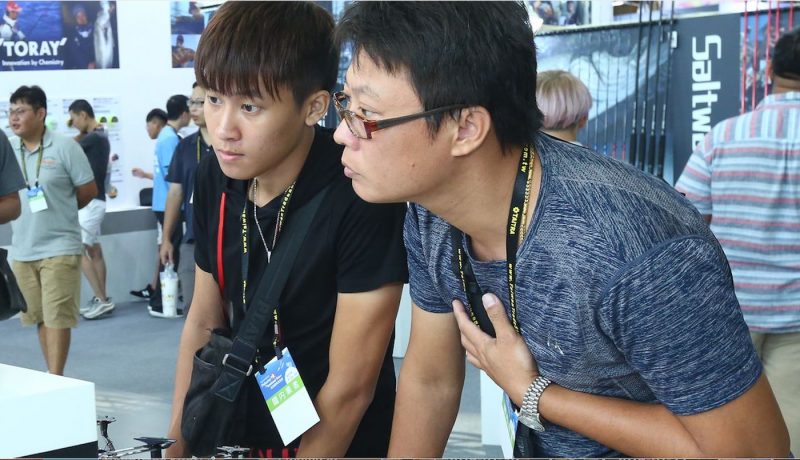Taiwan harvests the seas with innovative aquaculture technology
From algae ice-cream to deep sea water skin cleansers and caviar, seafood scientists in Taiwan are creating new lines of innovative aquaculture products
By Paula Arab
KEELUNG CITY, Taiwan – Like elsewhere in the Taiwanese economy, high-tech is playing an emerging and key role in the country’s fisheries, particularly in the aquaculture sector.
Amid pressing issues such as climate change and over fishing, the island country aims to showcase aquaculture practices that integrate collaboration with smart industries such as biological technology, artificial intelligence and the Internet of Things (IoT).
Such solutions are on display at what is quickly becoming a major international aquaculture technology expo hosted in Taipei each fall. On the heels of the successful 2019 Aquaculture Taiwan Expo and Forum in November, plans are already afoot for the 2020 tradeshow, which will mark the third annual Aquaculture Taiwan Expo.
The international expo “brings together manufacturers, wholesalers, and retailers to showcase aquatic organism health-care products, recirculating aquaculture systems, technologies for circular economy and automated devices,” says Aquaculture Taiwan’s website.
The event is co-organized by the government’s Council of Agriculture, the department responsible for marine fisheries. The department recently hosted a delegation of international journalists at its headquarters about an hour north of Taipei, in the port city of Keelung, where a briefing was held by June-Ru Chen, director general of the Fisheries Research Institute.
Alongside government bureaucrats, top researchers work within this institute, using the latest technology to improve fishing practices and create new lines of innovative aquaculture products. Seafood scientists have re-used unfertilized eggs leftover from aquaculture season to create caviar, for example. Deep sea water has been used as an ingredient to produce a series of masks and skin cleansers that hydrate and moisturize the skin. Ice cream has been made from algae.
“One of our visions in the Seafood Technology Division is to minimize the loss during aquaculture season,” says Fenny Panjaitan, a researcher from Indonesia. “We want to use the waste for something good,” she said. “Recently, we wanted to make caviar. We still have to develop the salt process but we are getting there.”

Panjaitan points to the display of products, including health food made from oysters, seaweed ice cream and a line of personal-care products such as skin masks and toothpaste, made from fish scales.
The Seafood Technology Division is one of six research centres nation-wide, which make up the country’s “new era of fisheries,” says Chen, of the Fisheries Research Institute.
“Functional aquatic products include cosmetics and health products that are made by extracting peptides (and collagen) . . . from unutilized resources such as fish scales and squid skin,” says a film promoting the Taiwanese fisheries. “In addition, healthy toothpaste and bone-health products are developed. We extract active substances from seaweed to produce health foods, instant drinks and capsules and seaweed-based herb teas.”
Chen said while aquaculture has helped ease the impacts of overfishing in Taiwan, the country plans to do more to tackle illegal, unreported and unregulated fishing.
The European Commission had placed a yellow card warning on Taiwan on Oct. 1, 2015, declaring it then as an uncooperative nation in the fight against illegal, unreported and unregulated (IUU) fishing. The yellow card was lifted last year.
Still today, there are some 350,000-people employed in the ocean fisheries sector and about 130,000 fishing households in Taiwan, said Chen. “We have about 22,000 fishing vessels. It’s too much for this country,” he said.
The institute’s role is to help the government come up with policies to ensure the viability of wild stocks alongside a sustainable aquaculture industry, said Chen.
Main Image – Attendees at a seafood expo in Taiwan courtesy of Taiwanfishery.com
Taiwan’s Aquaculture Industry at a Glance
- 28% of the country’s fish production comes from aquaculture
- 42,000 hectares of aquaculture
- Taiwan’s aquaculture history dates back 300 years.
- Taiwan’s marine aquaculture is divided into three categories – shallow sea culture, marine cage culture and saltwater pond culture.
- Grouper has become the most important aquaculture species today, after the Fisheries Research Institute successfully established the technology of its artificial propagation in 1982.
- Tilapia is another one of the country’s most important aquaculture species. The FRI has introduced various tilapia species and developed hybrids for aquaculture, such as red tilapia, monosex male tilapia and seawater tilapia.
Source: The Fisheries Research Institute, Council of Agriculture, Taiwan

